Baba Ganoush is based on a simple recipe for an appetizer that is made with roasted eggplant and homemade tahini. The dip is then combined with lemon juice, olive oil, and yogurt and seasoned with spices. Baba Ganoush is a perfect dip with roasted cauliflower, carrot, cucumber sticks, or just pita bread.
One of the great travails of being a parent is getting kids to eat healthy. Notwithstanding the epic broccoli battles or the kale-killing fields, I have yet to come across a parent who has not fought these dinner table skirmishes. The eggplant (aka aubergine or brinjal) has been the source of great clashes. Maybe it’s because of its weird name ~ who wants to eat a plant that calls itself an egg? Or maybe because there is a sliminess to this cooked fruit (yes … it’s a fruit belonging to the Solanaceae family). Either way, the eggplant has been a centerpiece of many arguments and sometimes tears. Enter: Baba Ganoush.
We first introduced this dish to my kids at a Middle Eastern restaurant here in the Bay Area. Served as an appetizer accompanied by warm pita bread, my kids loved the flavor and texture. It wasn’t until the meal was over that we revealed that it was made from eggplants. But there’s more to this unassuming fruit than meets the eye.
Origin:
The history of the plant itself is lost in the sands of time, as it grows from Africa to Southeast Asia and is used in a variety of dishes from being ground into a dip or substituted for meat. Baba Ganoush has several origin stories depending on who you talk with. Baba itself is a term of endearment for the father. There are several interpretations of ganoush:
- Could be a personal name
- Spoiled as in spoiled child
Regardless, the name of the dish has become loosely interpreted as a dish for ‘spoiled old daddy’. While there is an Ottoman legend that it was a dish made up by members of a Sultan’s harem, I prefer the Syrian folklore of the caring daughter who prepared Baba Ganoush for her elderly toothless father (her baba). She created a simple recipe that included eggplant that was roasted, cooked, and mashed in a dish consisting of tahini, olive oil, and lemon juice.
Health benefits of eggplants:
- Provides high fiber, is full of potassium, magnesium, folic acid, vitamins B6 and A, and mineral contents with a low-calorie count
- High antioxidant properties that protect against cellular damage because of anthocyanins
- Improves heart health
- Reduces LDL (bad) cholesterol and triglyceride levels
- Reduces blood sugar levels because of the high fiber and polyphenol content
- Weight loss, again because of high fiber and lower calories
Variations of the simple Baba Ganoush recipe:
Just as there are many origin stories for the etymology of this rich and fabulous dish, there are even more variations of this Levantine dish that can trace its history back to the 13th century.
In many parts of the Arabian Peninsula and parts of Armenia, Baba Ganoush recipes call for spices such as coriander and cumin seeds, while being garnished with chopped parsley or coriander leaves. Some Lebanese versions do not include the commonly used tahini (ground sesame paste), while in parts of Syria, yogurt is used as a substitute. In Israel, mayonnaise and fried onions are added, while in India, garam masala or even curry powder is added. It is not uncommon to use pomegranate or lemon juice to add a depth of flavor.
Other methods of cooking eggplants:
- Boiling: Drizzle olive oil and just like potatoes, it is done when it becomes fork tender.
- Roasting: Drizzle olive oil and other seasonings such as salt and pepper. Adding olive oil helps to caramelize the eggplants and tends to make for a richer dish. For a ½-inch thick eggplant slice, you can bake it in the oven for about 30 minutes at 400 degrees F.
- Eggplants absorb oil amazingly fast. The fruit’s cellular structure is full of tiny air pockets that absorb liquids, whether oil or water. To minimize this absorption, you need to break down these oil pockets by:
- Brushing the fruits instead of the pan. This allows you to control (and minimize) the amount of oil available.
- Microwaving the fruit for about 5 minutes will collapse the air pockets and also pre-cook it.
- Salting the eggplant will draw out the moisture and fill these air pockets.
- Soaking the eggplant in milk will fill the air pockets in an hour or so.
Other interesting facts about eggplant consumption:
- There are differing opinions on whether it can be eaten raw. According to the University of Vermont, eating eggplant raw could upset your digestive system and therefore, they advise that you cook the fruits before you consume them.
- While many people prefer to remove the skin so that the flesh is silk and smooth, you could also keep the skin because of the health benefits of its purple pigmented skin. That said, you can cut it into strips or pieces and salt them to draw out the natural bitterness.
- While many modern varieties are bred to minimize the bitterness, as a common practice, you could place the salted pieces on paper towels and cover them for at least 30 minutes to an hour before cooking. Once that is done, rinse off the eggplant and prepare it based on your preference.
Either way, you have the beginnings of a simple Baba Ganoush recipe. As I’ve indicated above, it is a dish that allows for many variations based on the availability of spices and your desired flavor profile, so it is one of those dishes whose boundaries have yet to be drawn.
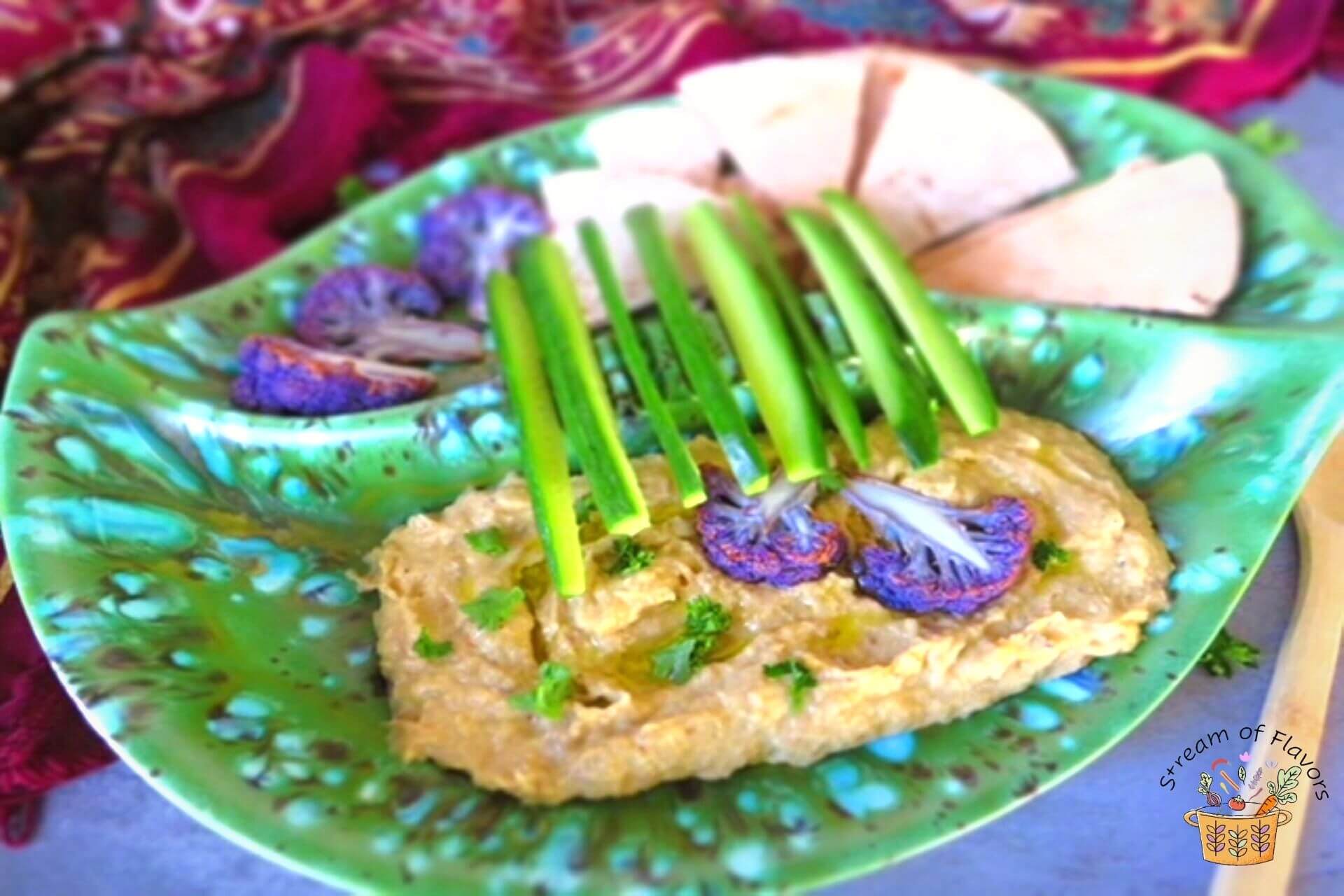
How to make this simple Baba Ganoush using my recipe:
- How to make tahini:
- Roast the sesame seeds and pine nuts for 2 minutes or until golden on medium heat.
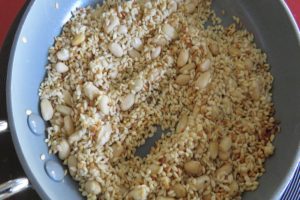
- Cool the mixture. Add olive oil and salt and grind until combined to a coarse paste.
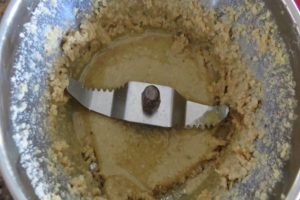
2. How to make Baba Ganoush using my simple recipe:
- Roast the halves of eggplants brushed with a little olive oil and salt. Place the eggplant slices with the skin side facing up.
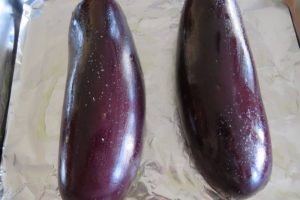
- Bake at 450 degrees F for 50 minutes (or until charred on the outside) on a foil-lined tray.

- In the meantime, roast the sliced cauliflower florets for 15 minutes on a wire rack and keep aside for garnish.
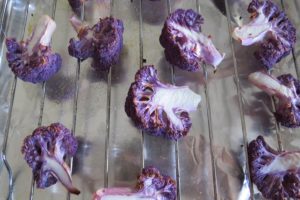
- Cool the eggplants slices and scoop the flesh with a spoon and discard the skin.

- Add the minced garlic, tahini, and lemon juice and emulsify.
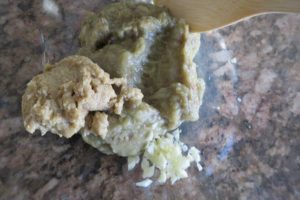
- Season with salt and spices and mix until combined.
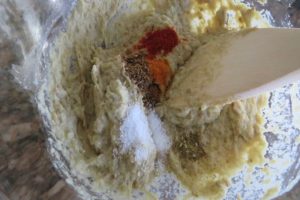
- Add the Greek yogurt and drizzle olive oil and mix well with a wooden spatula.
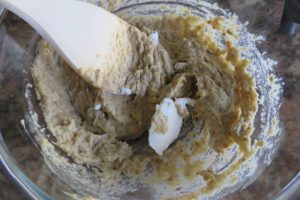
- Garnish with parsley and roasted cauliflower. Serve with toasted pita bread and Persian cucumber sticks.
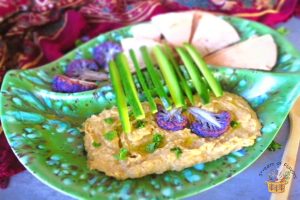
1. Roast the eggplant until the flesh is soft enough to scoop and mash. You could use the skin and pulse the mixture in a food processor.
2. While roasting the sesame seeds, it is important not to burn them or the Baba Ganoush will taste bitter.
3. Greek yogurt is optional although it adds a creamy texture and taste.
4. Try breaking up any strings or chunky parts of the flesh manually or in a food processor.
Storage:
This simple recipe for Baba Ganoush has a 3-4 day life when refrigerated and can be frozen in airtight boxes for 3 months.
Other recipe ideas that you will love:
Baba Ganoush is similar to hummus as a dip or an appetizer. I encourage you to try my Best Hummus Flavors.
If you like tahini, you could also try my mint tahini sauce in my Grilled Sweet Potatoes and tarator sauce in my Fish Shawarma!
Simple Baba Ganoush Recipe
Equipment
- oven, mixing bowl
Ingredients
For the tahini:
- 1 tbsp pine nuts
- 2 tbsp sesame seeds white
- 1 tbsp olive oil extra virgin
- ¼ tsp salt
For the Baba Ganoush:
- 1 eggplant big with seeds
- 2 cloves garlic
- 1¼ tbsp lemon juice
- 2 tbsp olive oil extra virgin
- ½ tsp cumin ground
- ½ tsp paprika
- ¼ tsp cayenne
- ¼ tsp salt Kosher
- ¼ tsp Za'atar spice
- 2 tsp Greek yogurt
- 4 floret cauliflower sliced (for garnish)
Instructions
How to make tahini:
- Roast the sesame seeds and pine nuts for 2 minutes or until golden on medium heat.
- Cool the mixture. Add olive oil and salt and grind until combined to a coarse paste.
How to make Baba Ganoush:
- Roast the halves of eggplants brushed with a little olive oil and salt. Place the eggplant slices with the skin side facing up.
- Bake at 450 degrees F for 50 minutes (or until charred on the outside) on a foil-lined tray.
- In the meantime, roast the sliced cauliflower florets for 15 minutes on a wire rack and keep aside for garnish.
- Cool the eggplants slices and scoop the flesh with a spoon and discard the skin.
- Add the minced garlic, tahini, and lemon juice and emulsify.
- Season with salt and spices and mix until combined.
- Add the Greek yogurt and drizzle olive oil and mix well with a wooden spatula.
- Garnish with parsley and roasted cauliflower. Serve with toasted pita bread and Persian cucumber strips.
Notes
- You could optionally strain the scooped flesh of the roasted eggplant using a strainer prior to making the Baba Ganoush.
- Omit yogurt if you do not like a creamy mixture.
Nutrition


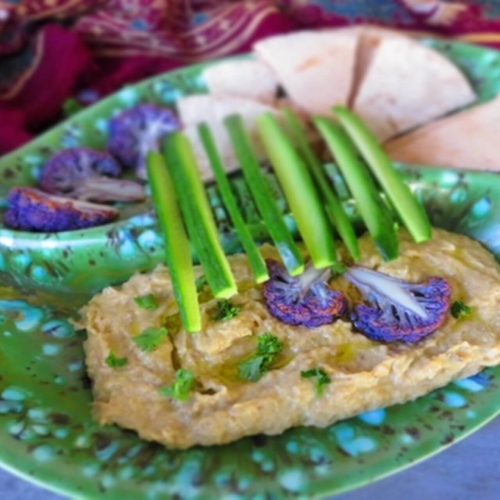
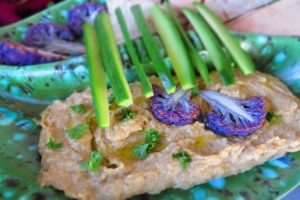




















this dish was perfect for our recent brunch party – thanks!!